Stanley Park, 111 acres, was opened in 1870, and is Grade II* listed, with major historic features designed by Edward Kemp. The park is famous for dividing the home grounds of Liverpool and Everton football clubs. It is near to the city centre and to several deprived areas, so it had a fair bit of litter, and junk in the lakes, and there were a couple of groups of yobbish-looking lads with bikes, but they weren’t any trouble. There were also plenty of fishermen, and parents with little kids, all enjoying the open air, the fresh greenery and the beautiful profusion of flowering trees and shrubs.

It was grey and overcast, and cooler than we had expected, although it warmed up when the sun eventually came out. We were tree hunting, following up on the two rare thorns we had looked for on 1st August 2021. We re-found the tree we think is the Altai Thorn Crataegus wattiana, on the north side of the lake, next to a bridge. It had the expected deeply incised leaves, although were surprised that it was still in bud, as the books don’t say it is late to flower. The height of 6 meters looked OK, and the girth was 77 cm, a reasonable increase on the 63 cm last time it was checked in 2004. The proof of the identification (or not) will follow in the autumn. If it’s the right one it should have yellow haws with five seeds.
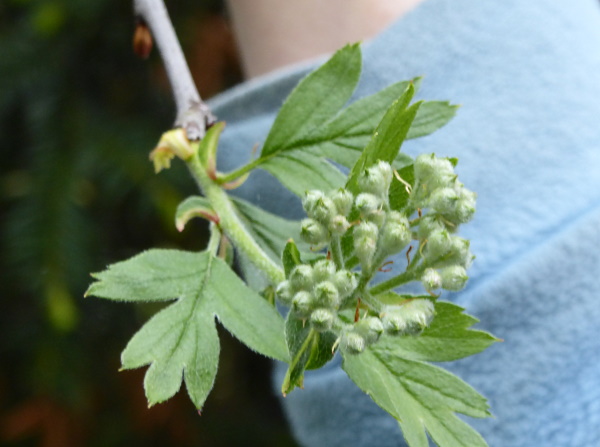
Then we looked for the other one, Grignon’s Thorn Crataegus x grignonensis. We didn’t find it last time, and we didn’t find it today. We had thought that with all the Hawthorns out it would be easy to spot, but there was nothing likely-looking in the place indicated (“North bank of lake at east end, within the perimeter fence”). We wondered if it had been lost during the remodelling of that end of the lake, but the restoration was in 2000, and the tree we were looking for had been seen in 2004. But blowed if we could find it. All the other trees and shrubs were in flower except the ones we wanted to see. For example, the picture at the start of this blog entry is a Bird Cherry Prunus padus, and here’s a Manna Ash Fraxinus ornus.
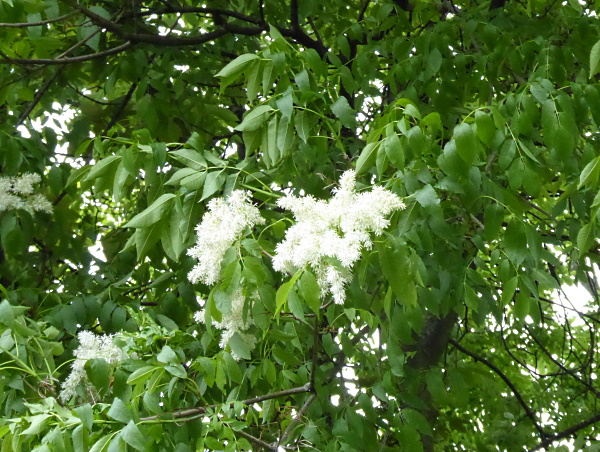
A small Scots Pine had its male flowers out, which released clouds of pollen when they were shaken.
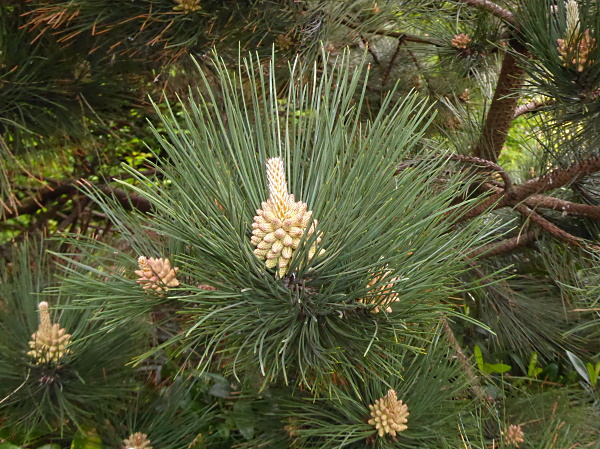
All the Hawthorns were blooming sumptuously, and we admired this pink one, with flowers much paler than usual. Could it be a pink Midland Hawthorn, which looks a little like this?
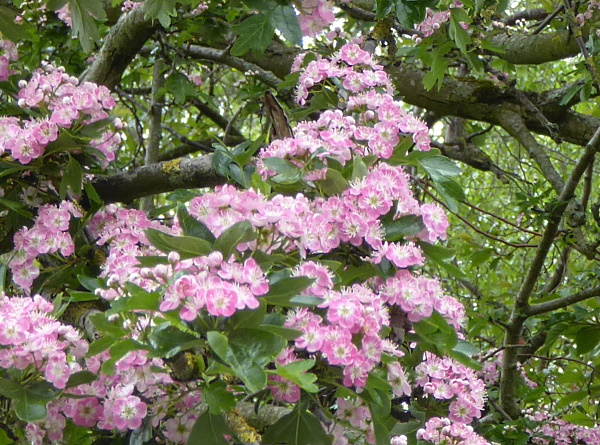
Last year’s wildflower meadow hasn’t been re-sown, so it is tending to Dock, but there were Ribwort Plantain, Red Campion and this Wild Carrot covered with ladybirds. I think they are Harlequins. They nearly all are nowadays.
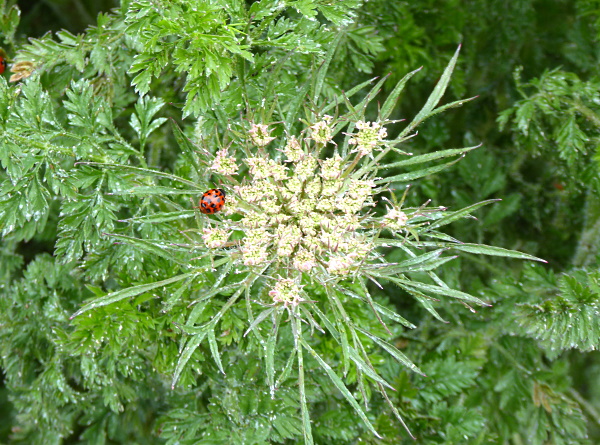
There were Swallows over the ornamental beds and the trees had Blue Tits, Great Tits, Greenfinch, Goldfinch and Long-tailed Tits. The usual Crows, Magpies, Wood Pigeons and Feral Pigeons were hanging about. On the lake there were plenty of Canada Geese, Mallards, Coots, Moorhens and one Great Crested Grebe. One duck was very odd-looking, white with a black eye, and he was head-bobbing hopefully to another very peculiar one.
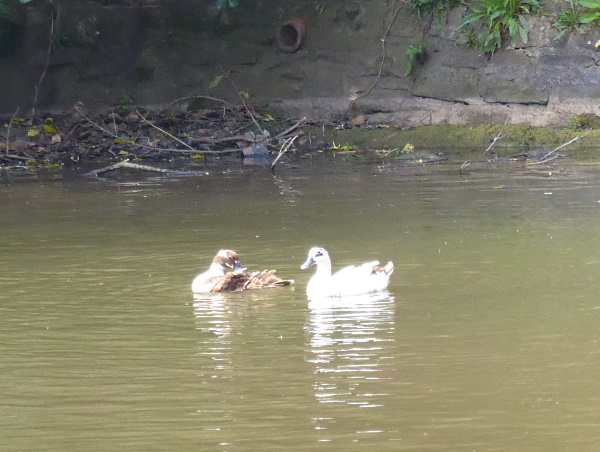
A pair of Mute Swans had nested on an island. Had they chosen that rubbishy corner on purpose, or had the junky barriers been put in to protect them?
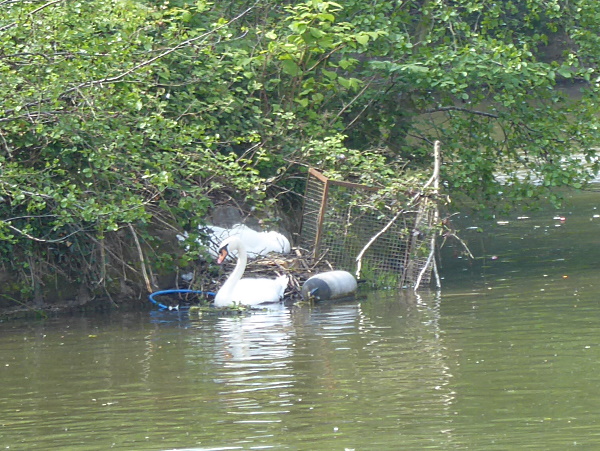
We often see Coot nests, but not Moorhens. However, one Moorhen appeared to have chosen an open ledge, right next to some pipework. I think the lake is currently very low, and if it rises she will be flooded. Her mate seemed to be bringing her all kinds of plastic as nesting material.
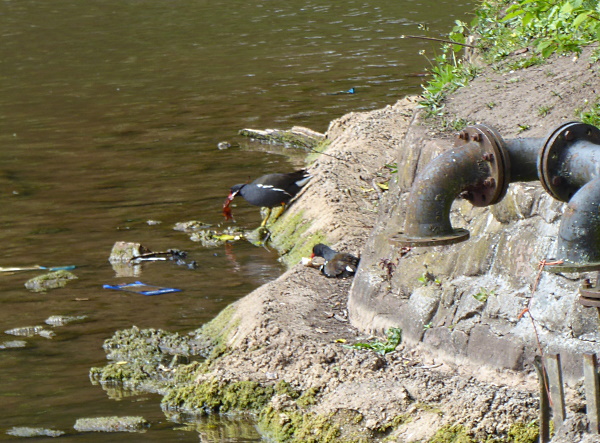
Around some of the shallow rubbishy bays was a Holly Blue butterfly, possibly looking for dampness or salts.

There was also a Speckled Wood basking on a Sycamore leaf, looking a bit ragged and bird-pecked.
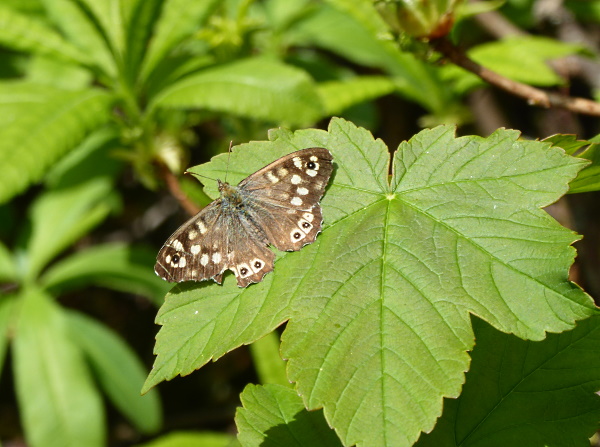
Garden shrubs included Solomon’s Seal, Mexican Orange, and one I think was Wiegela. This pink Rhododendron was superb.
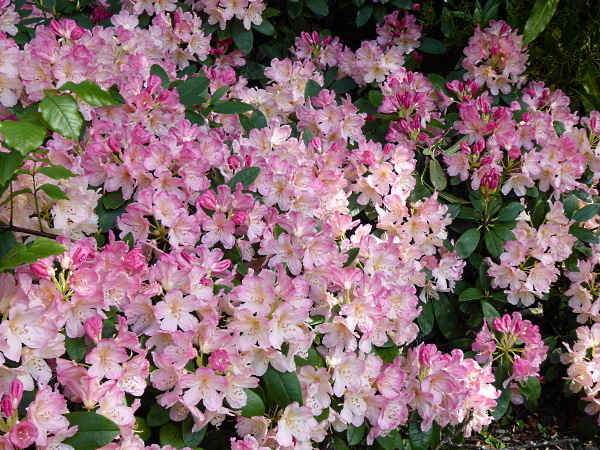
The best scent came from this yellow deciduous rhododendron Rhododendron lutea. Here’s an interesting snippet about it from Wikipedia. “Despite the sweet perfume of the flowers, the nectar is toxic, containing grayanotoxin; records of poisoning of people eating the honey date back to the 4th century BC in Classical Greece.”
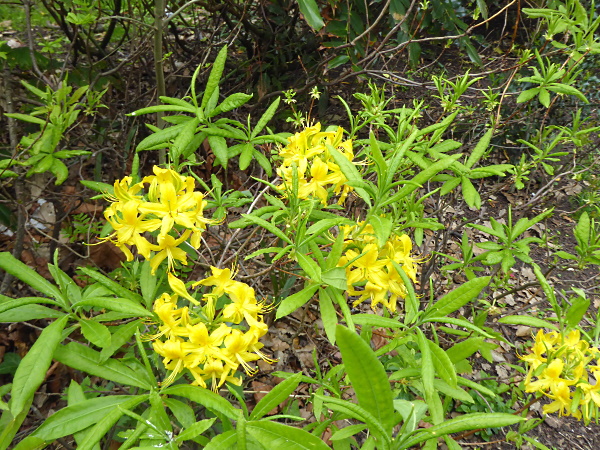
Public transport details: Bus 19 from Queen Square at 10.24, arriving Walton Lane / Bullens Road at 10.42. Returned from Walton Lane / Priory Road n 19 bus at 2.20, arriving city centre at 2.40.
